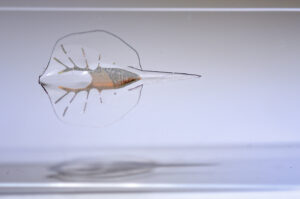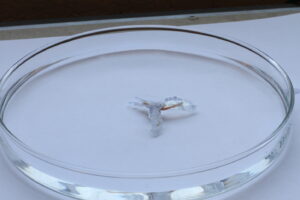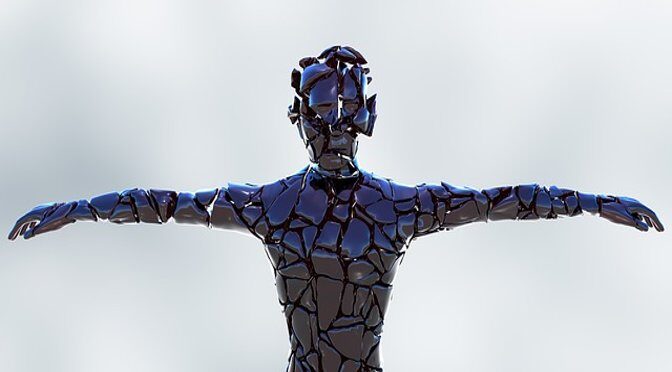Science fiction has been warning us about the dangers of ‘playing God’ ever since Mary Shelley wrote Frankenstein in 1818. However, in the past two months, there have been two separate scientific studies published about biohybrid robots; machines made from living cells.
Although the surface implications of such research initially appear to be little more than an attempt by a group of scientists to tamper with the laws of nature, there are practical reasons behind the research.

The traditional image of a large metal robot has serious practical issues. A bulky robot presents serious safety risks for any people working with it, as the slightest malfunction could cause injury or even fatality. Animal-like machines will (in theory) be able to perform tasks with an increased level of intricacy.
The scientists involved in both studies, Case Western Reserve University and Harvard University, believe that these biohybrid robots will ultimately prove to be less harmful and destructive to both people and the environment. However, creating such complex ‘machines’ is no easy task.
The science behind building biohybrid robots
The combination of robotics and biology is an emerging scientific field which has only now being explored. The cells that scientists have used to create these robots come from chickens, rats, and sea slugs (depending on the design). The cells are stimulated to respond to light or electricity to perform a required movement.
However, for the cells to move in the direction that the teams wanted them to, they had to be lined up correctly, otherwise when they were stimulated each cell would move in a direction independently of the others. To do this muscle cells were placed on a non-toxic scaffold and microscale lines, were stamped or printed onto the inorganic skeleton. The cells would then attach to this line to form a cohesive unit.
Researchers could then direct how the cells applied pressure to the skeleton. This ability to ensure that cells apply pressure in unison is what moves the robots. Depending on the design, robots can be made to walk or swim through this process – known as micropatterning.
To crawl or to swim?

Both case studies that have been published over the past two months have used micropatterning to build their robots. Otherwise, the two projects went in different directions.
The first study, by Harvard University, used rat muscle cells to power their stingray shaped robot. They manipulated the cells to respond to various shades of blue light by zapping the cells with light as they fed them with a saline-based solution. Kit Parker, the lead professor on the project, wanted to build a stingray shaped robot because of its efficient and fluid style of movement.
The robot was made from a mix of organic and manmade materials, making it one of the first of its kind in the world. ‘It’s made from a pinch of rat, a pinch of breast implant, and a pinch of gold,’ said Parker. This poetic description is more accurate than you might expect, and the finished article weighed just ten grams.
Case Western Reserve University’s study moved away from the free swimming design of Parker’s team and instead created a crawling robot using sea slug cells. The reason for using sea slug cells instead of rat cells was that sea slug cells are hardier than their mammal counterparts. Mammalian cells can only survive in specific conditions, where they are kept warm and in a nutrient rich solution. However, sea slugs are used to having to cope with the constantly changing conditions of coastal life, meaning their cells can survive in a variety of situations.
This crawling robot is under two inches in length and is powered by electricity, rather than light. To move the robot an electrical current is run through the ganglia, which forces the muscle cells to contract. According to Victoria Webster, a Ph.D. student who is leading the research, using the ganglia will give the ‘muscles’ greater functionality.
‘With the ganglia, the muscle is capable of much more complex movement, compared to using a manmade control, and it’s capable of learning,’ Webster said.
The ability of the cells within robots to learn may well sound like the beginning of the end of human civilization, but it is vital to the future of these ingenious inventions. Currently, they have no onboard control system, meaning they can only be controlled from close quarters. If they are ever going to have practical use this is one of the major obstacles for scientists to overcome.
What will they be used for?
Behind these experiments lies a potential revolution in our use of robotics. By building these small organic robots, it could become possible to solve all manner of issues.
One potential use for biohybrid robots is discovering toxins in water or leaking pipes. Webster theorizes that swarms of these tiny robots could be placed into oceans, lakes, and rivers without causing the same environmental damage as traditional inorganic robots. ‘Due to the biocompatibility of the devices, if they break down or are eaten by wildlife these environmental sensors theoretically wouldn’t pose the same threat to the environment traditional nuts-and-bolts robots would.’ Their organic makeup would ensure they biodegrade.
Additionally, both studies have speculated as to whether they could place these biological machines in the human body. If so they could be used for targeted drug delivery, clearing blood clots, and serve as stents. This new body of scientific research could make a quantifiable difference in the health of both people and the planet.
The beauty of this revolutionary work is that the full list of potential uses is still unknown. Parker best articulates the boundless possibilities that this research may have. ‘If you have four people looking at a piece of art, they each come up with a different interpretation of it. It’s the same way with this science. The cardiac biologist sees the implications for how the heart’s built; the marine biologist sees the implications for how the stingray moves, and the robotics engineer sees the way you can use cells as a building material.’
The creation of a hybrid between robotics and biology could one day prove to be revolutionary in the way we see the world, as scientists blur the lines between engineering and nature. As the research continues on cell manipulation and tissue engineering, this is unlikely to be the last we hear of this new scientific field.
This article was written by The Hearty Soul. The Hearty Soul is a rapidly growing community dedicated to helping you discover your most healthy, balanced, and natural life.

